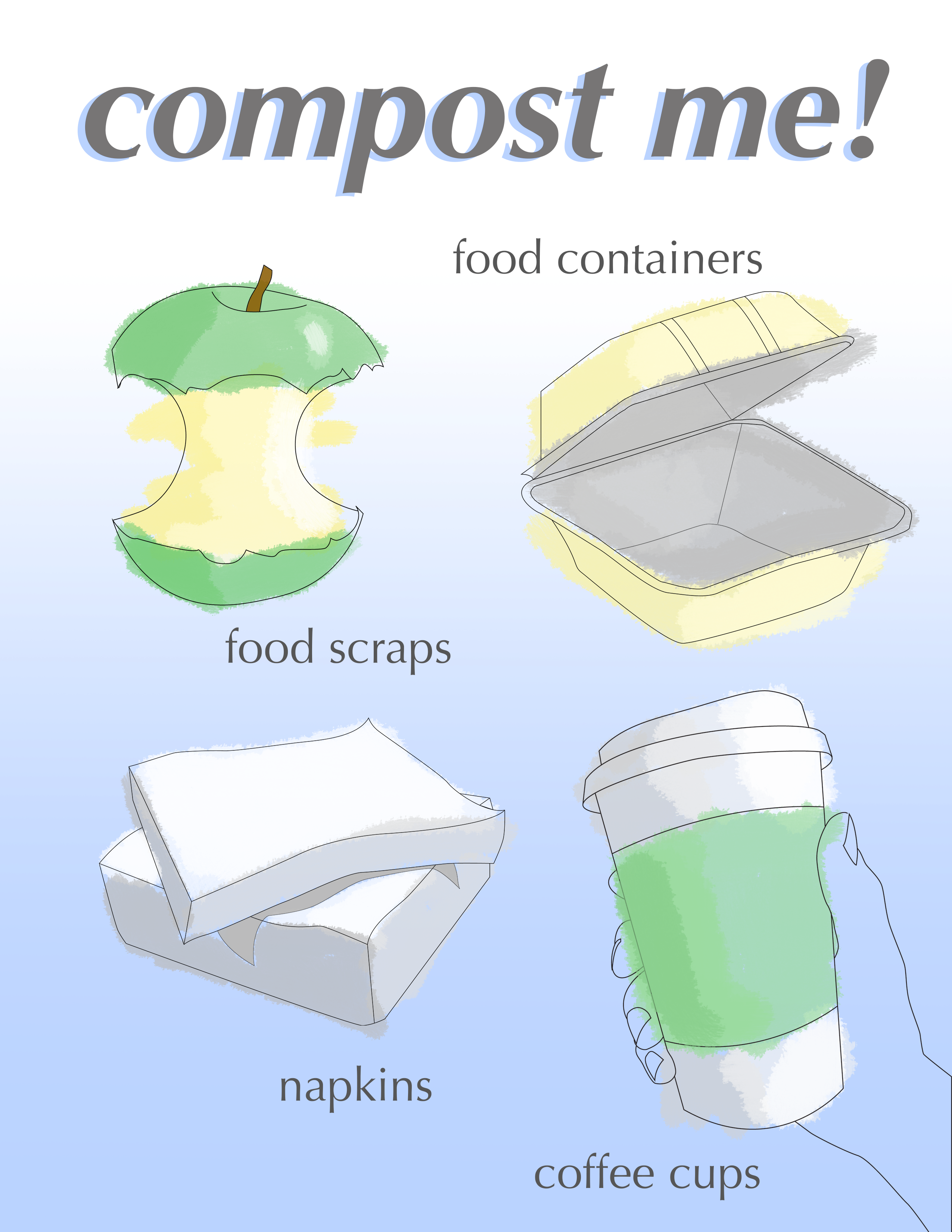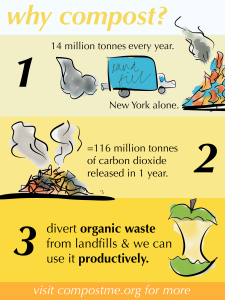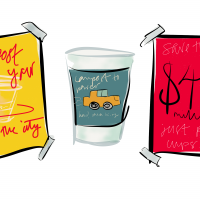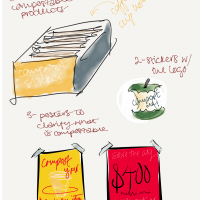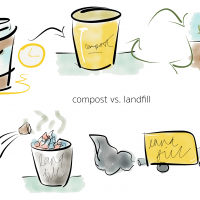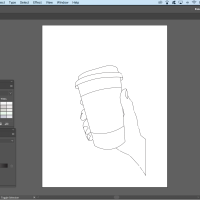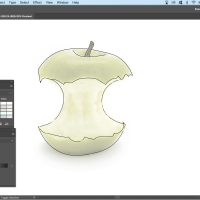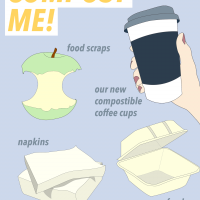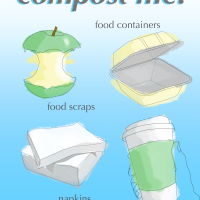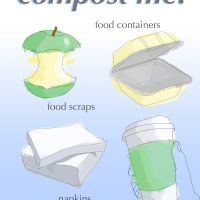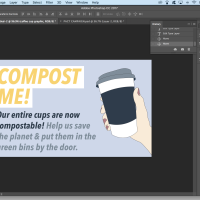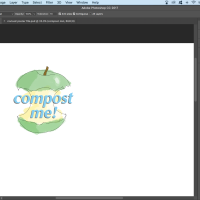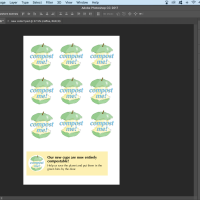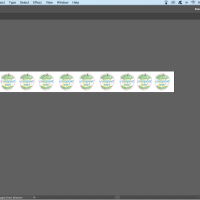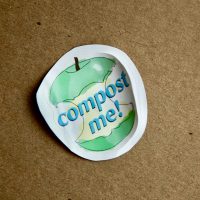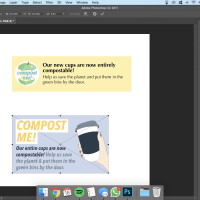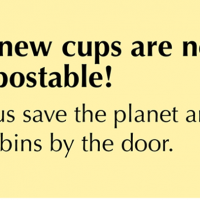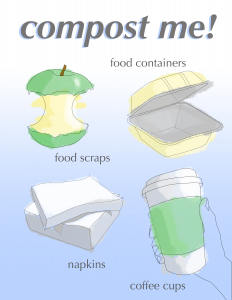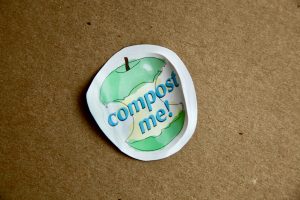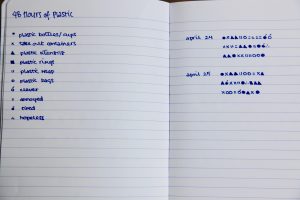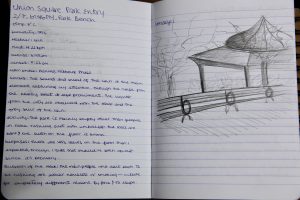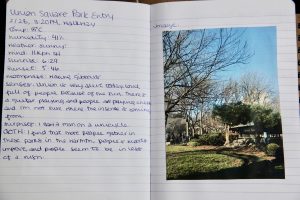STATEMENT
The issue I chose to focus on is that, unbeknownst to most people, many tops of to-go cups are 100% compostable. Even though this is a positive aspect of commercial waste, due to various reasons, this element is not fully taken advantage of in the way that it should be. These factors that hinder the environmental progress that could be made through these products include misinformation, limited availability of compost trash cans, and people being simply unaware of how they can actually make a difference. Because of the combination of these small problems, the tops of countless coffee cups, soda cups, soup containers and other forms of trash are all just sent to a landfill rather than being used more productively in ways that they could and should be. Especially in the US– and very visibly in big cities like New York– people are drawn to the efficiency of to-go products, and are socially and culturally adhered to fast-paced service despite the negative environmental impacts. As chains like Starbucks and such began and expanded, the desire for immediacy in consumer culture led to an increase in their popularity, and a subsequent stream of trash. To most people, the quick results and disposability associated with this nature of consumption is worth the waste, and many don’t even realize how much it builds up. A coffee every weekday before class or before work amounts to 5 per week per person, which can amount to 260 cups per year per person, which can seriously add up in New York, for example, where many people have such habits. Because of this, a large portion of the population in cities are directly affected by widespread litter, and are also indirectly affected (along with various other species) as more and more of the planet is occupied by landfills.
In order to combat this issue, I decided to focus on educating and informing the customers of sustainable brands with compostable products through effective signage and encouragement. Through posters, stickers, labels, and proper signage, people will be made aware of the benefits of composting. This way, the waste can be used to its full potential, rather than filling landfills.
PROCESS: RESEARCH
- “Trash to treasure: The benefits of waste-to-energy technologies” – Science Daily Article
- https://www.sciencedaily.com/releases/2017/08/170827101845.htm
- Instead of letting waste decompose in landfills, this article presents a study that outlines the benefits of using food waste as a potential energy source. Uses for this energy include powering garbage trucks and even personal cars. Not only would this move reduce the need for landfills, but it would also create clean fuel.
- “How New York Is Turning Food Waste Into Compost and Gas” – New York Times Article
- https://www.nytimes.com/2017/06/02/nyregion/compost-organic-recycling-new-york-city.html
- Following the appearance of recycling bins, New York is now placing compost bins around the city. 14 million tons of waste are thrown out each year, costing the city almost $400 million each year. By diverting organic waste from landfills and using it productively, New York is taking a large step towards sustainability.
- “Compost Awareness Campaign” – Why Not organization description
- http://butwhynot.org/past-projects/compost-awareness-campaign/
- This campaign done through two NGO’s called “Get Up Stand Up” and “Why Not?” encouraged composting through educating Europeans on how easy composting can be, and the benefits that making a small effort can reap.
- “Why Rosario Dawson is Backing a Home Compost Campaign” – Huffington Post article
- https://www.huffingtonpost.com/entry/alison-teal-diy-composting_us_59167b9fe4b00f308cf56aaa
- This activist created easy-to-follow videos on home composting, and how it’s easier and more accessible than most people think. According to the United States Department of Agriculture, food waste is the single largest component that takes up space in landfills across the country, releasing toxic levels of methane. Just like my campaign, she’s spreading the word.
- “San Francisco Campaign Aims to Make Composting Aspirational” – Media Post article
- https://www.mediapost.com/publications/article/282421/san-francisco-campaign-aims-to-make-composting-asp.html
- This campaign, specifically targeted at millennials, promotes composting with fun slogans like “the landfill is no place for an organic meal”, “yes, that’s what the green bin is for”, “farm to table, table to bin, bin to farm,” and “real foodies compost.”
- “The Importance of Signage” – Common Ground Compost post
- http://commongroundcompost.com/importance-of-signage/
- This article stresses the importance of signage in ensuring the participation of the public in recycling and composting. It even has a section focused on how food establishment employees can ensure that their staff are disposing of waste properly, and how they can be educated.
- “Signage” – Sustainability at Harvard post
- https://green.harvard.edu/topics/waste/signage
- Here, an interesting way the school went about educating people on waste disposal is by handing the responsibility over to the students. They posted digital signs that they asked the students to print and hang in waste areas or post on bins.
Infographic:
PROCESS: CREATING THE SOLUTION
Initial Sketches:
- INITIAL IDEA
- WHAT I’LL MAKE
- WHY IT’S NEEDED
Part 1: Poster
The aim of the poster is to make the signage both attractive and informational, so that people know to throw these items into the correct trash can.
- CREATING A GRAPHIC 1
- CREATING THE BASE GRAPHIC
- CREATING THE 1ST TRY
- 1ST ITERATION
- AN ITERATION I DIDN’T LIKE
- REVISED POSTER
Part 2: Sticker
The aim of this sticker is to create a recognizable label for compostable items, it could possibly be placed on the compost bins or on trays containing compostable items.
- 1st ITERATION
- CREATING THE BASE GRAPHIC
- LOGO DESIGN
- CREATING A PREVIEW PRINTOUT
- CREATING THE STICKER PRINTOUT
- FINAL STICKER
Part 3: Label
The aim of the label is to make it very clear that the items within the trays/baskets that it is placed on are compostable (in a more explicit way than the sticker). All together, these three items could rebrand a restaurant or food chain as eco-friendly.
- CREATING A GRAPHIC 1
- 1st ITERATION
- LOGO DESIGN
- 1st vs 2nd ITERATIONS
- LABEL PRINTOUT
- FINAL LABEL
FINAL PRODUCTS:
FIELD NOTEBOOK PAGES:
- DEAR DATA 1
- DEAR DATA 2
- PARSONIA 1
- PARSONIA 2
